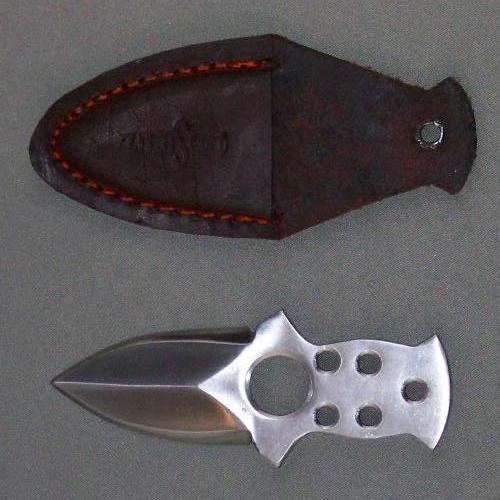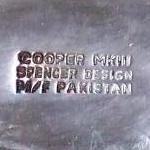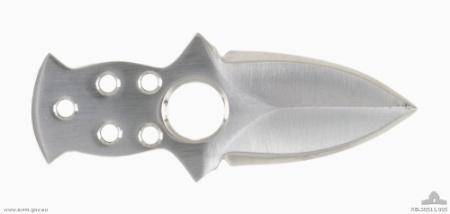Specialty Knives
Firemans Rescue Knife by Greg Steel
While the knife shown has no acceptance marks, it was most certainly made for service use.
I believe that this type of knife was used primarily by Rescue teams to cut parachute shrouds and harness away.

Hook Knife
Hook knife, issued for parachuting (water descents) used to cut tangled parachute cords in the water without risk of slashing yourself in the process. They have no makers marks or acceptance markings.

MC-1 Hookblade Knife
MC-1 Hook Blade knife was issued to RAAF air crew.
The knife was meant to be worn with the hook blade deployed and ready for immediate use in the case of an emergency.
The primary purpose of the hook blade was to cut parachute lines if the airman became entangled in them. The purpose of the clip point blade was to deflate a life raft if one was accidently inflated inside an aircraft cabin.
These knives had no military markings, all were made in the US. I am aware of the brands Camillus and Logan/Smyth and suspect that the other known maker of these knives, Schrade would have also been issued.

Eickhorn Knives Pocket Rescue Tool PRT VIII
- Eickhorn Pocket Rescue Tool PRT 8, made in Germany
- 8.4 cm 440A stainless steel,partially serrated blade with large thumb lug
- Aluminium handle with non slip rubber inlay, stainless steel pocket clip
- Window puncher / glass breaking stud, recessed seat belt cutter blade
- Liner-lock with front handle lock release button, lanyard hole
Issued in small quantities to units involved in roping and adventure training. No military markings.
(Eickhorn are now part of the Waffentechnik group)

Sicut Survival Knife
MARK III SICUT KNIFE. Made in Pakistan. Designed in Australia by Keith Spencer. Found in SASR survival kits supplied by Bob Cooper Outdoor Education P/L. No Military markings.



©Australian War Memorial
This Sicut Survival Knife is in the collection of the
Spyderco Rescue Knife
Spyderco Rescue 93mm. Made in Japan. Issued in small quantities to units involved in roping and Adventure Training. No Military markings. This knife has been used by Special Operations Task Group (SOTG) soldiers deployed to Afghanistan.

CRKT 13SF
Columbia River Knife & Tool© (CRKT©), Model 13SF Made in the United States. This knife was a private purchase item and was carried by a member of the Australian Defence Force on deployment to Iraq and Afghanistan.
It has no sheath but is fitted with a clip on the RHS of the grip. This enables the knife to be attached to webbing or be carried in a pocket.
